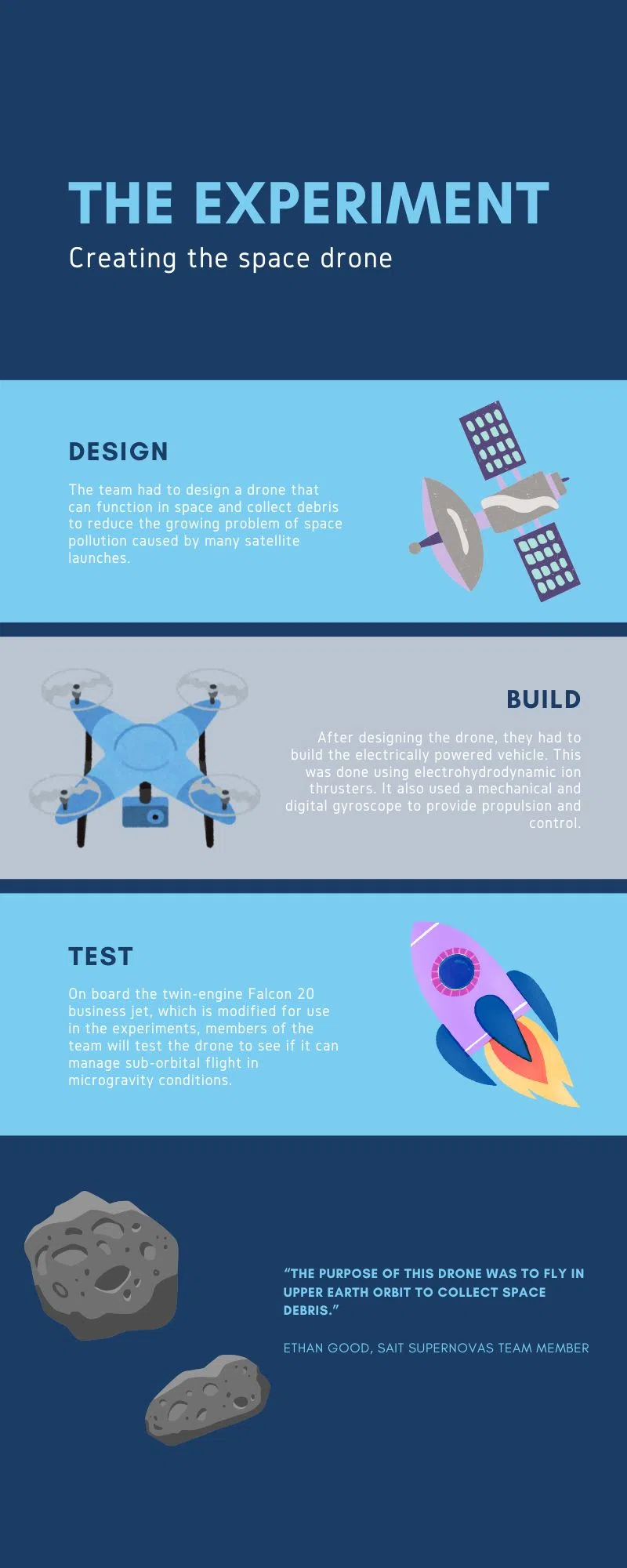
The SAIT Supernovas are making history as the first team from a polytechnic school to participate in the Canadian Reduced Gravity Experiment Design Challenge (CAN-RGX). The challenge provides post-secondary students with a unique opportunity to contribute to space exploration and development. Teams selected for the competition will design, build, and test a scientific experiment.
The SAIT Supernovas have chosen to research how an electronically powered drone can operate in a microgravity environment. This requires the use of an ionic thrust system to provide propulsion and control. The drone’s primary purpose is to determine if a larger version could be used to collect space debris.
“It can just fly in upper earth orbit collecting space debris, which has become a problem in recent years with the amount of small satellites being launched,” says Ethan Good, a member of the SAIT Supernovas team.
Space debris, often referred to as space pollution, is a growing issue caused by the rising number of satellites launched into orbit. Debris can range from defunct satellites to tiny paint flecks, both of which pose the risk of significant damage in space. Collisions between operational satellites and debris are becoming more frequent each year.
The experiment will take place aboard the National Research Council of Canada (NRC) Falcon 20, a twin-engine business jet modified in collaboration with the Canadian Space Agency (CSA) for reduced gravity flights.
By the end of the experiment, the Supernovas’ drone may be capable of flying in sub-orbital flight. While CAN-RGX doesn’t officially have a winner, the team has made significant progress for their polytechnic school by developing a viable technology.




Comments